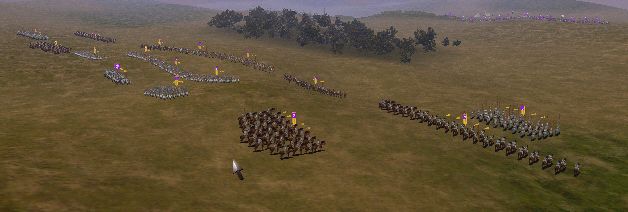TACTICS |
| The Byzantine Empire’s disastrous defeat by the Seljuk Turks at Manzikert in 1071 effectively marked the end of what is often described as the ‘middle’ period of Byzantine history. Thereafter, surrounded on all sides by younger, more vigorous nations, and with its own financial and manpower resources progressively dwindling, the once all-powerful Empire slipped into a steady decline. However, the demise was anything but peaceful, and, one way or another, for much of the last four centuries of its existance it was to find itself in a state of virtually constant war. |
| The late army, between 1118-1453, was made up of four principle elements – a small central army based in constantinople: various provincial armies; foreign mercenaries; and auxiliaries provided by allies and client states. Even with all these resources, individual field armies with the exception of those of major campaigns, were invariably small, usually comprising no more than 2000 men, but sometimes reaching 3-6000, and on rare occasions 10-120000. However, it is possible that at least some of the smaller figures derived from old records refer only to those cavalry present, and need to be multiplied several times to allow for foot-soldiers.Unit organization : Army sub-divisions were called by a variety of names. Units called by the middle Byzantine terms bandon (or tagma) and moira, originally bodies of 300 and about 1,000 men, still occasionally occur in the early part of the period, but the most commonly encountered by the 13th century was the cavalry allagion.
Unit makeup: Soldiers of the late period most fell into one of three distinct categories: pronoiars; smallholding soldier-farmers; or foreigners either auxiliaries or mercenaries. Distinctions between these categories were often blurred. But in broad terms pronoiars were the least common troop type. and mercenaries/ auxiliaries by far the most common. |
|
|
| By the time of the so-called Byzantine era (the surviving eastern Roman empire) true power on the battle field had long since passed into the hands of the cavalry. If there was any infantry, it was made up of archers, whose bows had longer range than the smaller bows of the horsemen. Handbooks were published, most famously by the general and later emperor Maurice (the strategicon), the emperor Leo VI (the tactica) and Nicephorus Phocas (the updated tactica).As with the old Roman legion, the infantry still fought at the centre, with the cavalry at the wings. But often now the lines of the infantry stood further back than the cavalry wings, creating a ‘refused’ centre. Any enemy who would try and attack the infantry would have to pass between the two wings of the cavalry. In hilly ground or in narrow valleys where the cavalry could not be used, the infantry itself had its lighter archers at the wings, whereas its heavier fighters (scutati) were placed at the centre. The wings were positioned slightly forward, creating a kind of crescent-shaped line. In case of an attack on the centre of the infantry the wings of archers would send a storm of arrows upon the attacker. Though in case the infantry wings themselves were attacked they could retire behing the heavier scutati.Often though infantry was not part of the conflict at all, with commanders relying entirely on their cavalry to win the day. It is in the tactics described for these occasions that the sophistication of Byzantine warfare becomes apparent.The manuals indicate that a cavalry force fought in a formation looking much like this. |
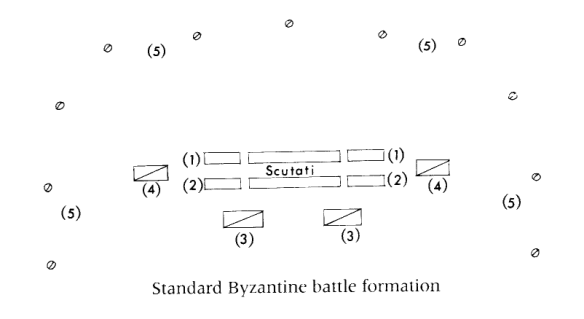 |
1) Central Front Line |
| 2) Central Second Line | |
| 3) Reserve/rear security | |
| 4) Close-in envelopment/security flank units | |
| 5) Distant envelopment/screening units |
| The main force would be the Fighting Line (ca. 1500 men) and the Supporting Line (ca. 1300 men). The Supporting Line might have gaps in it to allow the Fighting Line to widthdraw through if necessary. The Wings (2 x 400 men), also called the liers-in-wait tried to get behind or into the flank of the enemy in a sweeping move around the forces, far out of sight. The Flanks (2 x 200 men) either side of the main Fighting Line were meant to prevent the enemy’s wings or flanks from circling one’s own force. Often the right Flank was also used to attack the side of the opponent’s main body. Striking from the right it drove into the left of the opponent which was harder to defend as most warriors would bear their weapons with their right arm. At the back of the force a Third Line or Reserve (ca. 500 men) would be posted out to the sides, ready either to help defend the Flanks, to help steady any forces of the Fighting Line driven back through the Supporting Line, or to intervene in any flanking assaults on the enemy. This leaves the general’s own escort which would most likely lie to rear of the force and would consist of about 100 men. |
| SAMPLES OF TACTICS FROM ONLINE BATTLES (replays) | ||
| I have placed a number of replays of this tactics for you to examine. Please note that the defeat was due to the heavy cav becoming tired, so be advised when fighting in the desert using this tactics either use heavy cav very quickly or use units that wont tire so easily. The basic tactic is use archers to reduce the amount of enemy, if they charge then allow your archers to drop behind your Byzantine infantry. Keep the reserves to strengthen the line when required. At the same time allow your cav to get behind the enemy and then charge them from behind. This in most cases will force them to disengage in if you are lucky to route. Have fun., | ||
 |
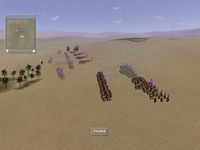 |
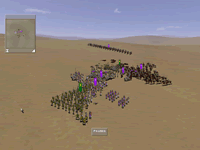 |
| RageKrast Runs | Example2 | Example3 |
 |
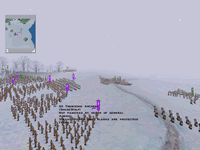 |
 |
| Defeat against Chilli | Victory against Chilli | Victory again against Chilli |

